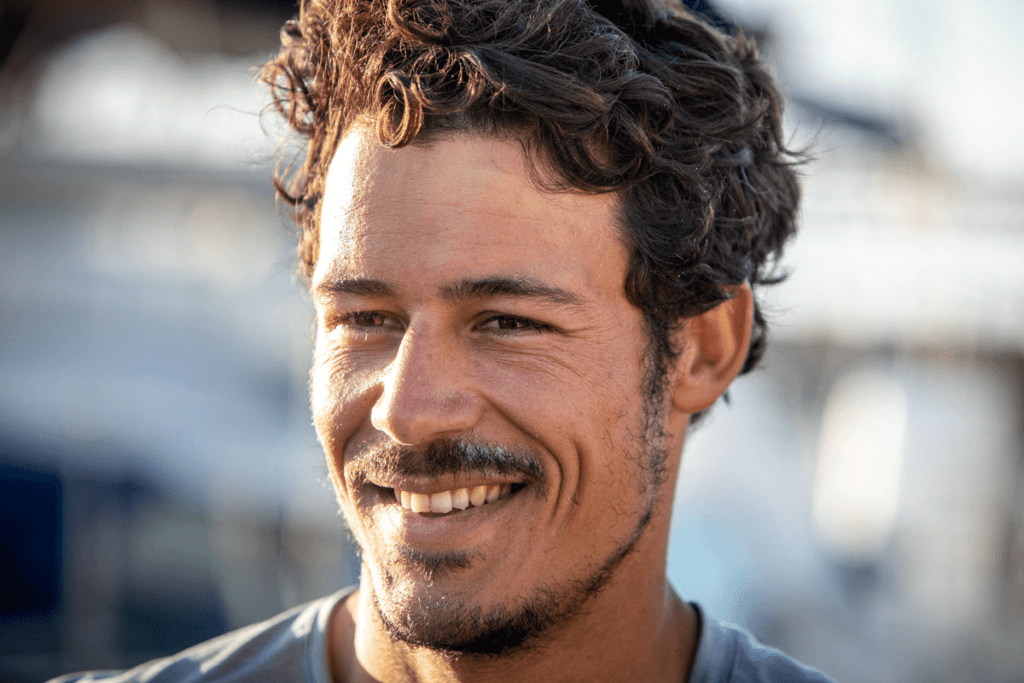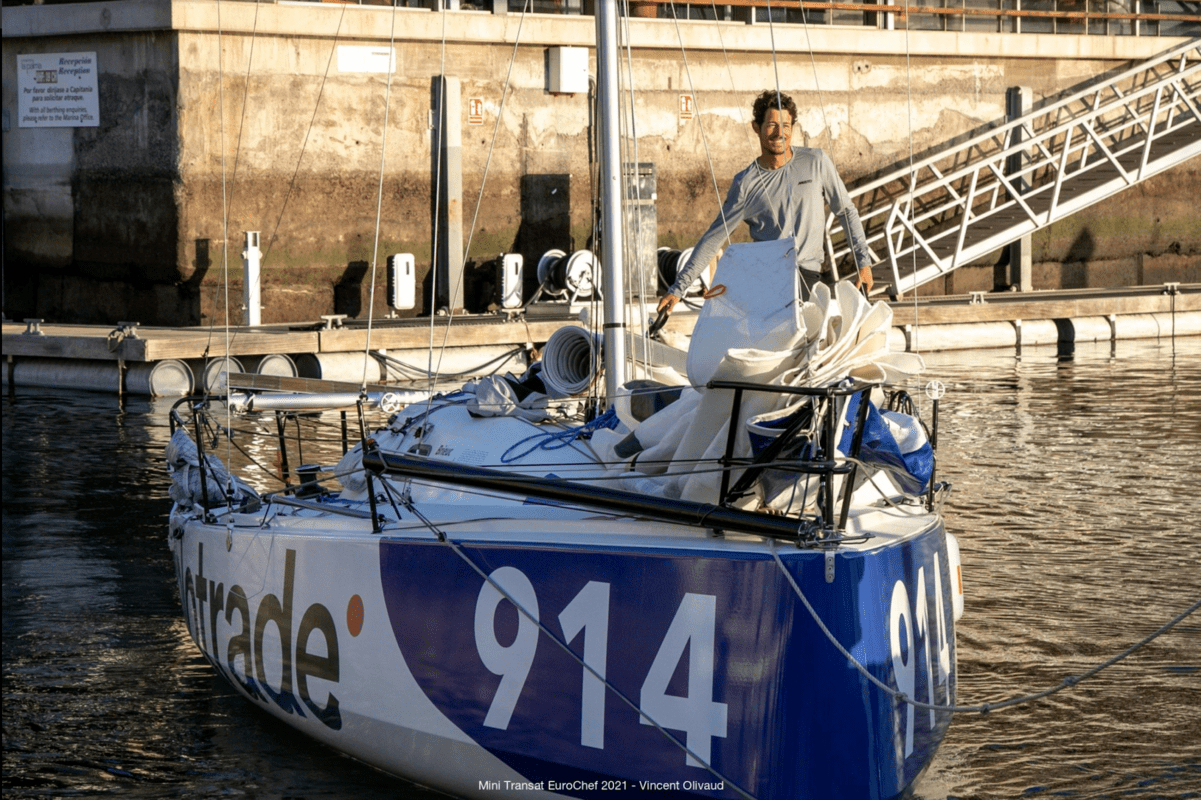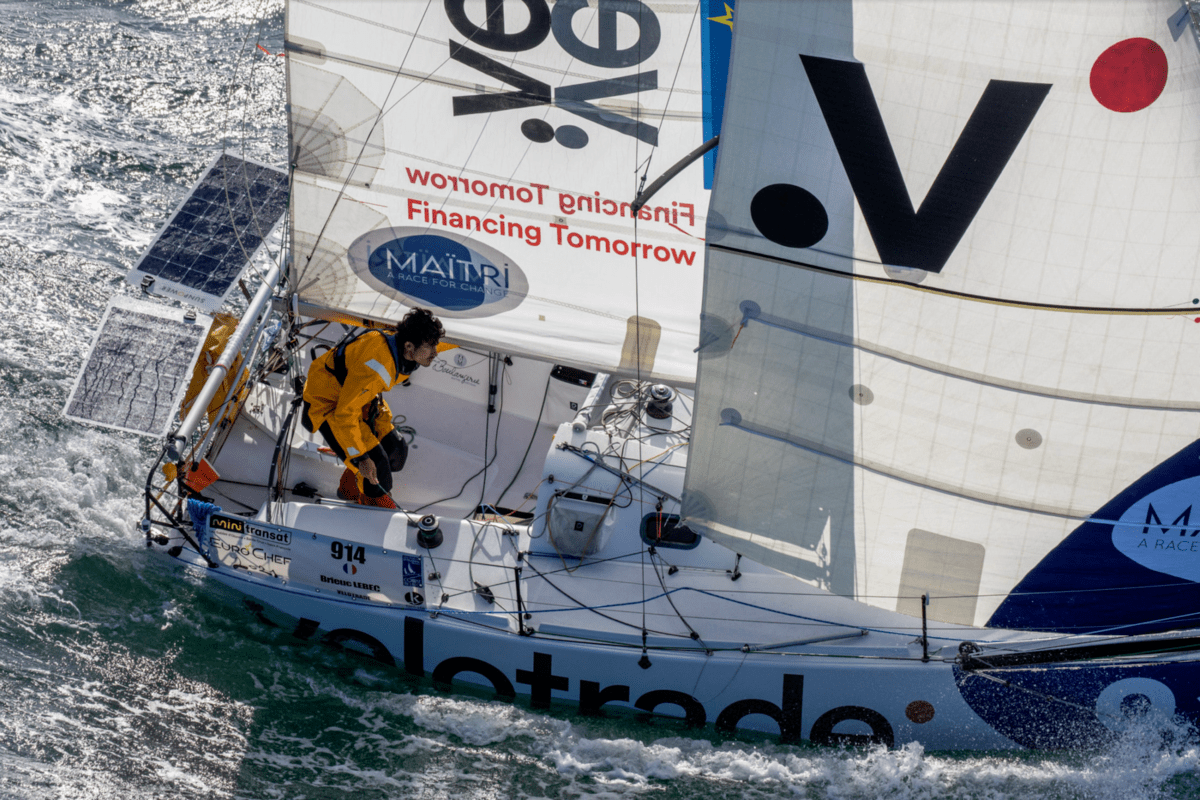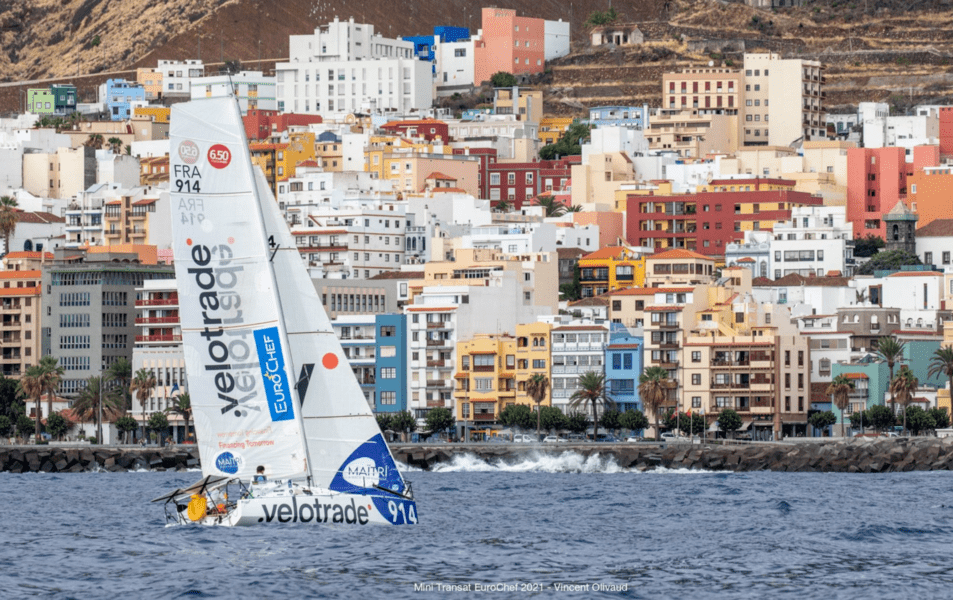The first leg of the 2021 Mini Transat Challenge finally came to an end as the last boats arrived on the 11th of October. This year’s race was surely filled with a lot of action, drama, and uncertainties.
Following up with our last update on the first leg, the chain of events that followed thereafter turned out to be favourable for some, while it changed the game for many.
Content
A Wild Ride to the Finish Line
With boats dismasted, some wrecked by the rocks and others struck by the angry orcas while avoiding to put up with the storm, this year’s race has not been less than a film packed with a lot of drama and a climactic twist.
It all began from the Bay of Biscay, a passage where conditions got trickier which was a decisive factor for many. With winds gusting to 30 knots, the whole fleet was shaken up as they managed to pass through the rough sea.
Threading along this zone of high pressure was certainly challenging. Those furthest on the west had a slight advantage as they benefitted from more wind pressure coming from their rivals out on the east.
Following that was the front which opened gaps between boats as they sailed through tougher wind conditions. This is where a group of four sailors made a good escape towards Cape Finisterre.
However, the journey ahead to Cape Finisterre was when maneuvering became the trickiest. This is where the four skippers in the prototype category took a massive lead. Tanguy Bouroullec, Fabio Muzzolini, Pierre Le Roy was the order of the winning trio who finished within 1 hour 10 minutes of each other with Fabio finishing 1 hour and 3 minutes after Tanguy and Pierre finishing about 6 minutes later. Although, Pierre was evidently in the lead, Tanguy snatched it away with his tactical move off the north-west tip of Iberia.
The positioning and pressure received by this trio is also what further gave them a competitive edge in the race. Being positioned 45 and 60 miles on the east of 2 rivals, the skippers not only benefitted from a better angle but also more pressure during the last night before the finish.
Meanwhile, the top three boats under the production category had a bigger gap amongst each other to the finishing mark. Melwin Fink taking the lead won the race under the production category 19 hours and 12 minutes before Christian Kargl who finished 25 hours 52 minutes before Hugo Dhallenne.
To Stop or Not To Stop
On October 2, shortly after passing Cape Finisterre, the skippers received a weather warning from the race director warning them to proceed further. The message “suggesting” the skippers to seek shelter to the nearest port was very vague.
“The boats which are in the zones Finistere Nord and Finistere Sud at the passage of the front are recommended to stop in the nearest port.”
– says the Race Director
Most of the sailors interpreted it as a forced stop to protect themselves from the bad weather conditions lying ahead. Panic steered and escalated amongst the sailors as the message recirculated over the VHF several times. Majority of the fleets then started to seek shelter.
However, Melwin Fink (the leading skipper in the production category) thought it was too early to seek shelter 36 hours before the front was due. As a result, he followed the weather forecast carefully and decided to proceed towards the south where weather conditions were said to be manageable. He spoke with Christian Kargl and together they made a move towards the south of Porto and eventually managed to escape amidst this so called ‘storm’ that everyone had been panicking about.
Brought to you by Velotrade, a marketplace for corporates to access financing.
Like our content? Follow us!
Wondering how it all began? Know what brought Velotrade and sailing together through our Mini Transat 2021 sponsorship article!
Brieuc and his Journey During the First Leg
Our skipper Brieuc representing Velotrade finished in position 11 on October 9 after 11 days 17 hours 47 minutes and 15 seconds, completing the 1,350 nautical miles of the first leg. The start was remarkable as Velotrade cleared the first mark with a lead in both prototype and production boats combined! It was indeed a proud moment for Velotrade, but there is a lot that went behind achieving these results.

On these first days, Brieuc barely slept and had his strategy clear in mind. The first night was light mainly involving negotiation with the ridge and heading towards the west in view of the front ahead. Winds abate to 30 knots over the second night, easing over to 20-25 knots by early next morning.

However, as conditions worsened, there were nights where he eventually had to sleep in rough sea conditions and tactical game had to be at its best. The boat got wet, hit, but it was committed as that is what we came for.

The situation got trickier with the ambiguous announcement made by the race management recommending boats to seek shelter due to an alarming weather condition ahead. The conditions were forecasted to be deteriorating on the Portuguese coast following a cold front ahead with gusts of 45 knots at Cape Finistere.
Brieuc’s initial response was to continue forward and wait for the next weather report to make a decision. He decided to cut off from the VHF, as the message started broadcasting recurrently. It eventually became a stir of opinions creating an outburst of chaos and panic amongst all.
About an hour later, a competitor contacted him saying that “all the riders in the leading group have agreed to follow the directions of the race director and stop at Baiona.” The message was repeated several times and all skippers started to follow it. Seeing that, Brieuc decided to do the same as there was no sporting interest left to continue the race.
Following that, the race management agreed to organise a re-start. Keeping the fairness of the race intact, distances between the skippers were considered. Those who were in the lead started at 8 am, followed by the rest at 8:09 am and so forth. Brieuc was to start at 8:30 am, but as they say when everything is working perfectly aligned to your interests, it can be too good to be true. This is exactly what happened later. What seemed like a fair race at first, turned into a chain of unfavourable events.
Since the skippers arrived in two different ports based on their location, skippers starting from the other side had a big advantage as the wind was on their side. With 4 knots of speed, it took Brieuc forever to get out of the bay while the others escaped with the wind under the spinnaker. The first day and night was extremely tiring and nerving for Brieuc as he encountered unstable wind conditions.
Upon arrival at the Santa Cruz de la Palma, his feelings were mixed which were hard to be expressed in words.
“The frustration is great, but despite everything I have experienced incredible moments on the water.”
– says Brieuc Lebec
It is Not Game Over Yet
Upon race completion, 19 racers protested due to the vague and imprecise message announced by the race director following the severe weather warning. The race management therefore agreed that this was an inadequate action on their end.
On 20 October, the race management therefore decided to compensate the loss of 80 skippers by deducting 24 hours from their race times. The leading boats who chose not to stop after the message remain unaffected by this decision. Due to this, the podium positions for the first leg have been slightly modified. This is certainly a huge turning point for us!
Preparation for the second leg is now on in full swing. After a week’s rest, Brieuc was back in water in preparation for the second leg. Any minor damages are now repaired, and the boat is all set to go!
Photos by Vincent Olivaud

